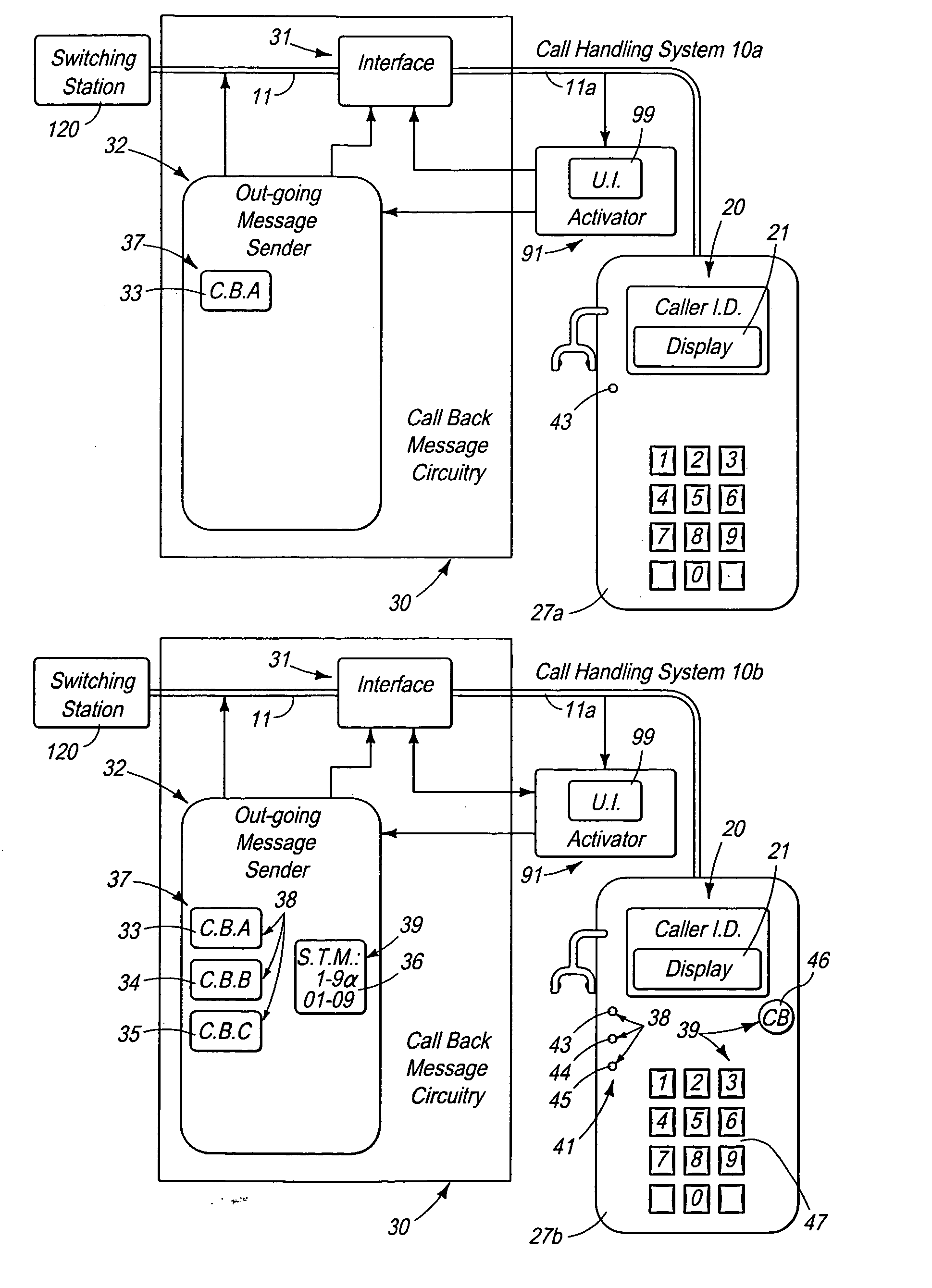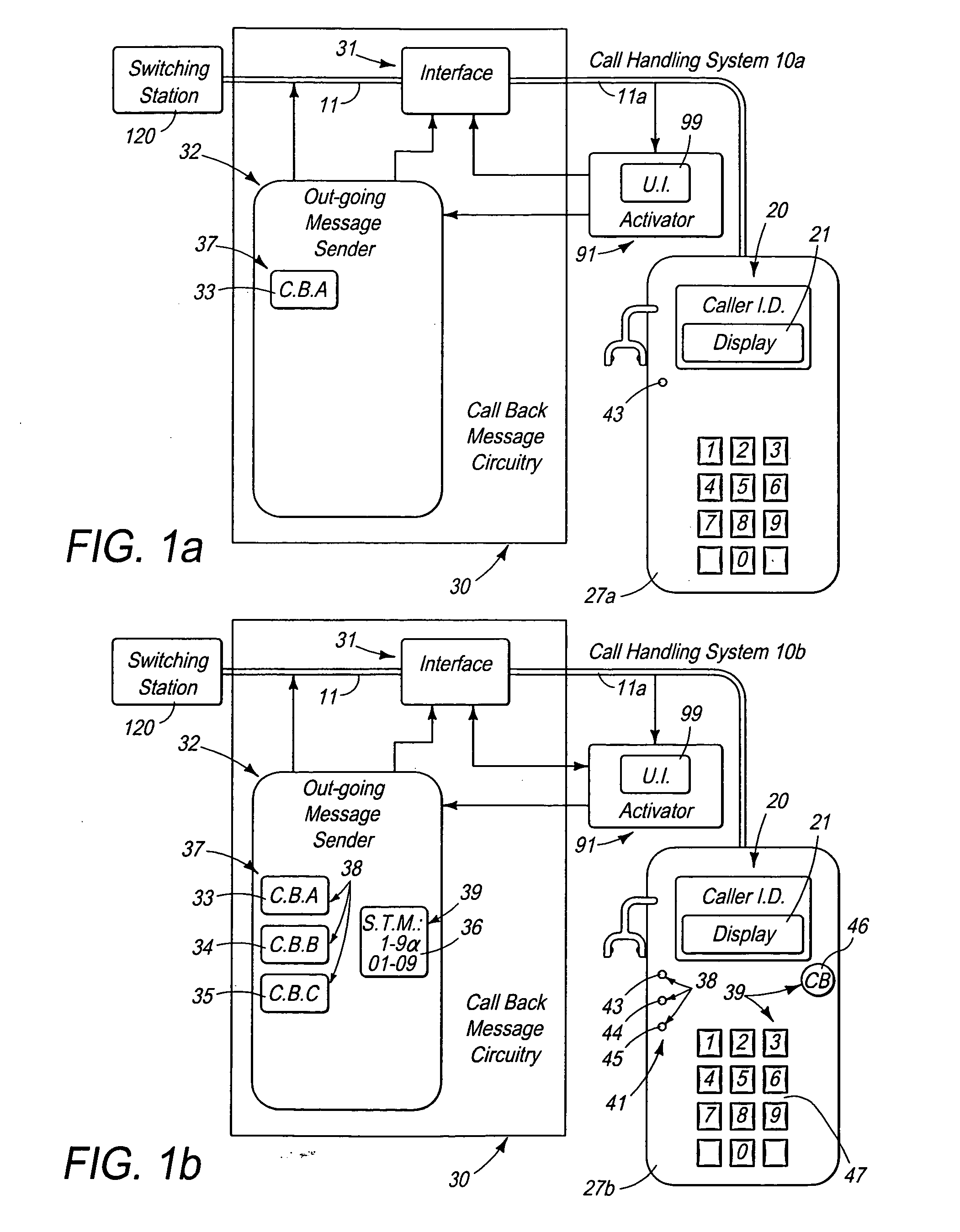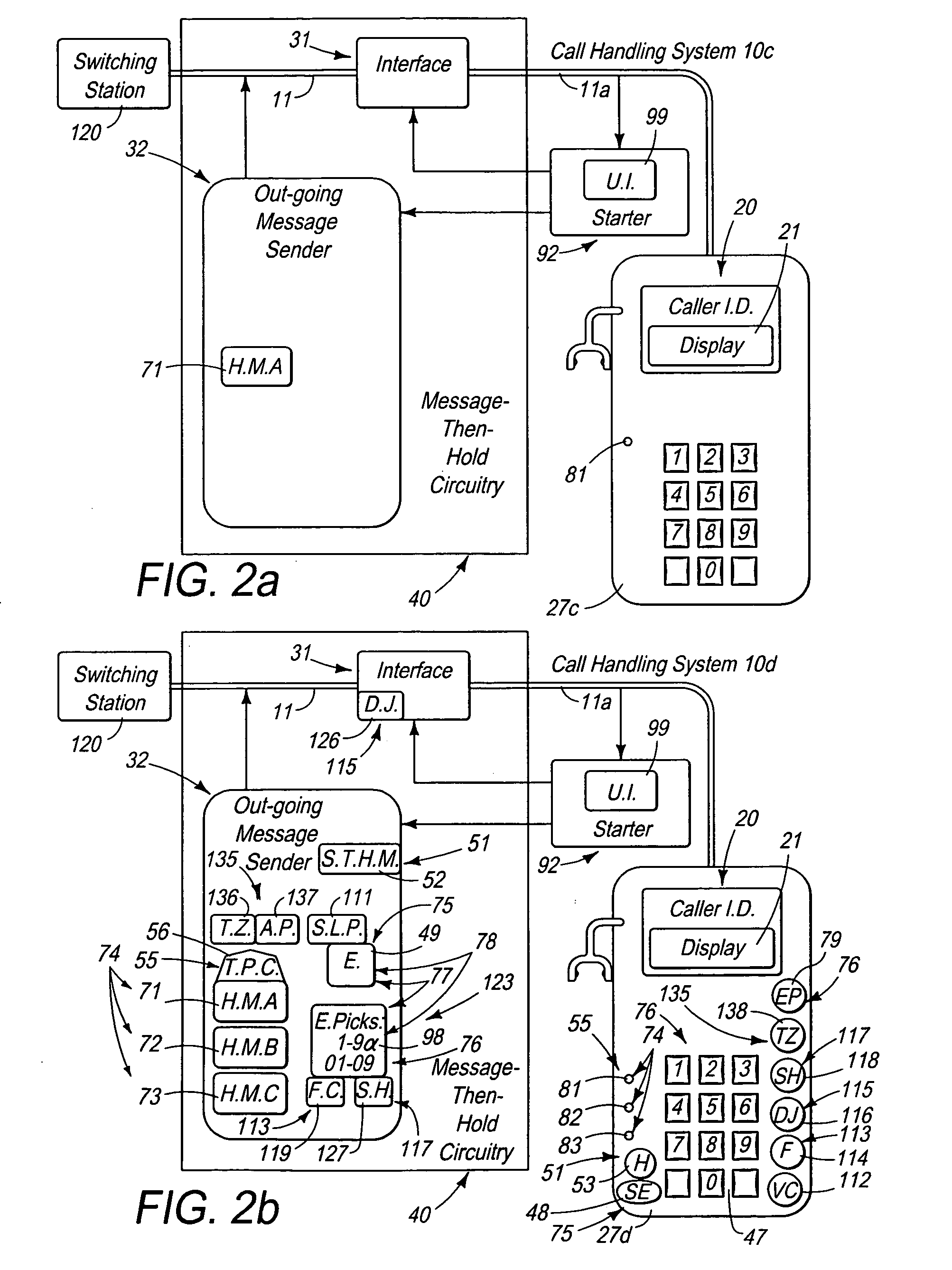Telephone call handling system
a call handling and telephone technology, applied in the field of telephone call handling system, can solve the problems of caller id. being flawed, every caller having to be inconvenienced in providing call-announce information, and caller id. not providing the true identity of the caller, etc., to improve the utilization rate of caller id, improve the utilization rate, and save time/productivity
- Summary
- Abstract
- Description
- Claims
- Application Information
AI Technical Summary
Benefits of technology
Problems solved by technology
Method used
Image
Examples
first embodiment
[0041]A first example of this first embodiment is illustrated as system 10a in FIG. 1a. For this example, out-going message sender 32 of callback circuitry 30 is configured to deliver to a caller a callback message A 33 shown as C.B. A 33. Callback message A 33 states, “Please call back in one hour”. (The message, “Please call back in one hour” constitutes a specific time callback message 37, shown in FIGS. 1a and 1b. Conversely, callback messages can state, for example, “I'll call you back in one hour”.) Message sender 32 is further configured to send a signal to interface 31 at the conclusion to the sending of the message.
[0042]For this example, UI 99 of activator 91 is configured to receive instruction from a user via a control button 43, button 43 electrically connected to (or connectable to) line 11a and located at telephone 27a. When pressed, button 43 is configured to send a control signal via line 11a to UI 99. UI 99 responds by sending a signal to interface 31 and, after a ...
second embodiment
[0056]A first example of this second embodiment is illustrated as system 10c in FIG. 2a. For this example, out-going message sender 32 of message-then-hold circuitry 40 is configured to store and to deliver to a caller a hold message A 71 shown as H.M. A 71. Hold message A 71 states, “I'll be right with you”. Interface 31 is configured to maintain the off-hook condition until detecting the call being answered by the user.
[0057]Further for this example, UI 99 of starter 92 is configured to receive instruction from a user via a control button 81, button 81 electrically connected to (or connectable to) line 11a and located at telephone 27c. When pressed, button 81 sends a control signal to UI 99. UI 99 responds by sending a signal to interface 31 and, after a two-second delay, sending a signal to sender 32. Interface 31 responds by going off-hook. Sender32 responds by sending hold message A 71 to the caller. (Button 81 can be part of starter 92.)
[0058]An example of operation of this fi...
third embodiment
[0085]A first example of this third embodiment is illustrated as system 10e in FIG. 3a. For this example, out-going message sender 32 of concert circuitry 50 is configured to provide stored entertainment 49 of user-selected deployed entertainment 75 to a caller. Sender 32 is further configured to send entertainment 49 to information signal provider 85. Information signal provider 85 is configured to receive entertainment 49 from message sender 32 and to send entertainment 49 to deliverer 100 via line 11a. (Stored entertainment 49 and deployed entertainment 75 described prior. Entertainment 49 can comprise music 77 and / or interesting sound 78 shown in FIGS. 2b, 3a, 3b and 8, described prior.) Stored entertainment 49 can comprise a song-last-played 111 (shown as S.L.P. 111 in FIGS. 2b, 3a, 3b and 8.) As an example, if handling system 10 is being employed as a music player (or other) and stored entertainment 49 (or pick storage 98 or other) is being played, message sender 32 is configu...
PUM
 Login to View More
Login to View More Abstract
Description
Claims
Application Information
 Login to View More
Login to View More - R&D
- Intellectual Property
- Life Sciences
- Materials
- Tech Scout
- Unparalleled Data Quality
- Higher Quality Content
- 60% Fewer Hallucinations
Browse by: Latest US Patents, China's latest patents, Technical Efficacy Thesaurus, Application Domain, Technology Topic, Popular Technical Reports.
© 2025 PatSnap. All rights reserved.Legal|Privacy policy|Modern Slavery Act Transparency Statement|Sitemap|About US| Contact US: help@patsnap.com



